| 2008 Country Profile: Zimbabwe PDF version PDF version

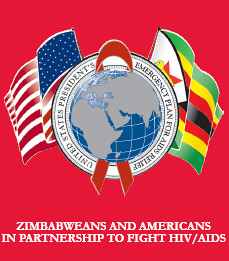 |
|
2008 Country Profile: Zimbabwe
National HIV prevalence rate among adults (ages 15 to 49): 20.1 percent1
Adults and children (ages 0-49) living with HIV at the end of 2005: 1,700,0001
AIDS deaths (adults and children) in 2005: 180,0001
AIDS orphans at the end of 2005: 1,100,0001
Under PEPFAR, Zimbabwe received more than $16.8 million in Fiscal Year (FY) 2004, nearly $20.6 million in FY2 005 and approximately $22 million in FY 2006 to support an integrated HIV/AIDS prevention, treatment and care program. PEPFAR is providing $23.5 million in FY 2007. | |
Recognizing the global HIV/AIDS pandemic as one of the greatest health challenges of our time, President George W. Bush announced the President’s Emergency Plan for AIDS Relief (Emergency Plan/PEPFAR) in 2003 — the largest international health initiative in history by one nation to address a single disease. The United States is changing the paradigm for development, rejecting the flawed “donor-recipient” mentality and replacing it with an ethic of true partnership. These partnerships are having a global impact and transforming the face of our world today.
Partnership to Fight HIV/AIDS
The Emergency Plan is committed to supporting Zimbabweans as they garner the resources and strengthen the critical services necessary to fight HIV/AIDS. The U.S. Government (USG) team in Zimbabwe aims to strengthen the will and capacity of all Zimbabweans to demonstrate leadership and take action to address HIV/AIDS at all levels of society. This will be accomplished using a three-pronged approach:
- Strengthening and intensifying transformative systems for prevention, treatment and care services;
- Developing innovative, evidenced-based program models and tools that will be expanded to national scale with leveraged resources; and
- Developing technical and organizational capacity of indigenous organizations to scale-up and sustain programs.
This approach builds on Zimbabwe’s previously well-developed health and training infrastructures, strong health-seeking behaviors, and widespread participation in organized religion. It also capitalizes on the dedication and commitment of public and private sector technical staff, and the on-going, active involvement of faith- and community-based organizations in the fight against HIV/AIDS.
| Emergency Plan Results in Zimbabwe |
| # of individuals receiving antiretroviral treatment in fiscal year 2007 |
|
40,000 |
| # of pregnant women receiving prevention of mother-to-child HIV transmission (PMTCT) services in fiscal year 2007 |
|
70,900 |
| # of pregnant women receiving antiretroviral prophylaxis for PMTCT in fiscal year 2007 |
|
9,400 |
| # of counseling and testing encounters (in settings other than PMTCT) in fiscal year 2007 |
|
403,300 |
| Note: All USG bilateral HIV/AIDS programs are developed and implemented within the context of multi-sectoral national HIV/AIDS strategies, under the host country’s national authority. Programming is designed to reflect the comparative advantage of the USG within the national strategy, and it also leverages other resources, including both other international partner and private-sector resources. The numbers reported reflect USG programs that provide direct support at the point of service delivery. Individuals receiving services as a result of the USG’s contribution to systems strengthening beyond those counted as receiving direct USG support are not included in this total. Numbers may be adjusted as attribution criteria and reporting systems are refined. Numbers above 100 are rounded to nearest 100. |
|
HIV/AIDS in Zimbabwe
Recent estimates from the Joint United Nations Programme on HIV/AIDS (UNAIDS) indicate that approximately 1.6 million adults 15 years and older were living with HIV/AIDS in 2005. Despite the severity of the epidemic, prevalence rates in Zimbabwe have begun to show signs of decline, from 22.1 percent prevalence among adults ages 15 to 19 in 2003 to 20.1 percent prevalence in the same age group in 2005.1 Dr. Peter Piot, head of UNAIDS, said that in Zimbabwe, “The declines in HIV rates have been due to changes in behaviour, including increased use of condoms, people delaying the first time they have sexual intercourse, and people having fewer sexual partners.”2
Zimbabwe has a generalized HIV/AIDS epidemic with HIV transmitted primarily through heterosexual contact and mother-to-child transmission. High risk groups, including migrant laborers, people in prostitution, girls involved in intergenerational sexual relationships, discordant couples, and members of the uniformed services warrant special attention in the fight against HIV/AIDS. Young adults and women are hardest hit by the epidemic. In 2005, approximately 930,000 women over the age of 14 were estimated to be living with HIV/AIDS in Zimbabwe.1
1 UNAIDS, Report on the Global AIDS Epidemic, 2006.
2 Dr. Peter Piot, “Launch of the 2005 AIDS Epidemic Update.” November 21, 2005. Full text of speech available at http://data.unaids.org/Media/Speeches02/SP_Piot_EPI05_21Nov05_en.pdf. |
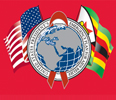 |
Emergency Plan Achievements in Zimbabwe to Date |
|
Challenges to Emergency Plan Implementation
Zimbabwe continues to suffer a severe socioeconomic and political crisis, including unprecedented rates of inflation and a severe ‘brain drain’ of Zimbabwe’s health care professionals. Elements of a previously well-maintained health care infrastructure are crumbling. Zimbabwe’s HIV crisis is exacerbated by chronic food insecurity. Sub-optimal nutrition increases the vulnerability of individuals with compromised immune systems to life-threatening opportunistic infections, such as tuberculosis. Gender inequality and widespread practices of multiple and concurrent sexual relationships, and cross-generational sex fuel Zimbabwe’s epidemic, particularly among youth. Social norms, including stigma associated with HIV/AIDS, excessive alcohol consumption, and a reluctance to talk about HIV status or sexual relations also create barriers to behavior change. |
| A Counselor Turns Despair Into Hope
The first thing Primary Care Counselor Edward Mupunga says to new clients is, “My name is Edward. I am also HIV-positive and taking ARVs [antiretroviral drugs].” Edward is a Primary Care Counselor (PCC), part of a new cadre of workers in the national health system in Zimbabwe. PCCs are individuals with no prerequisite medical education, who are trained to fill a critical need for HIV counseling services in hospitals and community clinics. With support from the Emergency Plan, the Zimbabwe Association of Church Hospitals took the lead in training PCCs. About 300 newly trained PCCs are being integrated into the health system. The PCC cadre was adopted by the Ministry of Health and Child Welfare as part of the national health system. As a PCC, Edward is a valued member of the Opportunistic Infection Clinic team. “Sometimes, the doctor refers patients to me for counseling because he has identified a need,” Edward explained. “Sometimes, I see what I believe to be a medical issue during a counseling session, and I go to discuss it with the doctor.” He added, “Helping others keeps me going. ... Every time I counsel someone, I grow from the experience, because I know that I’m helping that person face his fears and live more positively.”
|
|
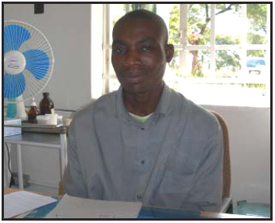
Primary Care Counselor Edward Mupunga is part of a
new cadre of workers in Zimbabwe's national health
system. |
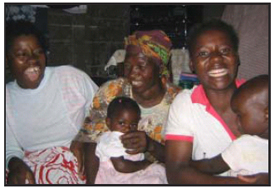
Grace took action to prevent the spread of HIV from
mother to child. |
|
Finding Strength and Hope through Counseling
The Emergency Plan supports the Call To Action Program, which is aimed at reducing pediatric HIV infections transmitted from mother to child. Grace Savasava is but one beneficiary of the Call To Action program. After becoming pregnant in 2003, Grace learned that she was HIV-positive. She had difficulty accepting her HIV status until she met with counselors and discussed her status and options for preventing mother-to-child HIV transmission. Grace agreed to take antiretroviral prophylaxis to help reduce the chances of transmitting HIV to her child. Eighteen months after giving birth, Grace took her baby to the clinic to be tested for HIV. She was extremely nervous, but was reassured by counselors of the importance of HIV testing. When her baby tested HIV-negative, Grace was extremely happy. Hope for her child’s future was renewed. Today, Grace encourages other HIV-positive, pregnant women to enlist the services of the prevention of mother-to-child HIV transmission program.
|
| Breaking the Barriers of Stigma through Love
Grief brought Nyevero and Herbert Mpariwa to the Chitungwiza Utano Public Health Community Partnership, a project supported by the Emergency Plan outside Harare, Zimbabwe. Both HIV-positive and recently widowed, they came to the Utano community center to attend an AIDS support group. As time healed their wounds, Nyevero and Herbert formed a bond that blossomed into love. When Nyevero and Herbert married in December 2005, hundreds gathered at the Utano center to celebrate with them. Nyevero noted that too many HIV-positive youth are without hope. “They reach 15 and think they have no future. We wanted to be a living example to them that life does not end with HIV.” With support from the Emergency Plan, the Chitungwiza Utano Community Partnership Project works to improve coordination and integration of existing HIV services and to support comprehensive HIV/AIDS care and treatment in the community. The project has become a model for stigma reduction and promotion of positive living thanks to young community leaders like Nyevero and Herbert.
|
|
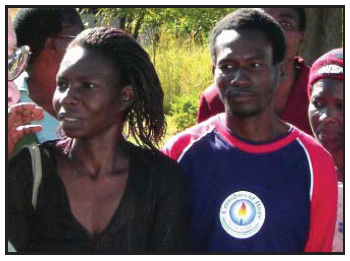
Nyevero and Hubert prove that love has no bounds for people living
with HIV/AIDS. |
| |  |  |




 PDF version
PDF version